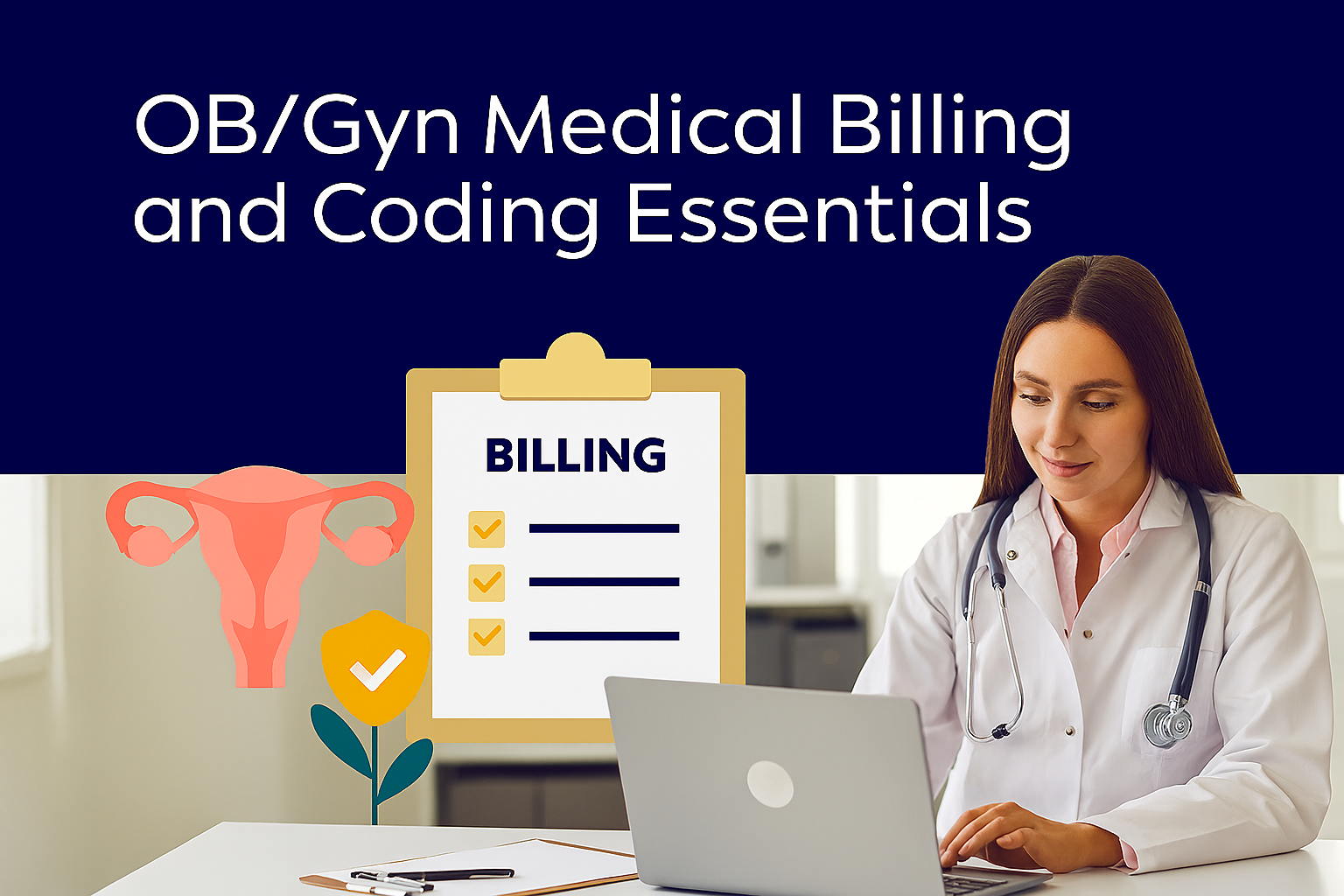
For healthcare providers in obstetrics and gynecology, accurate billing and coding form the backbone of both financial stability and quality patient care. Unlike general medical practices, OB/Gyn services cover a broad spectrum, ranging from preventive screenings and routine prenatal visits to complex surgical procedures and delivery services. Each of these must be translated into standardized codes to ensure providers are properly reimbursed while maintaining compliance with payer rules. Among the many elements to master, OB/Gyn Medical Coding is especially important because it determines how services are documented and how claims are processed. Without a firm grasp of these essentials, practices risk claim denials, revenue loss, and even compliance penalties.
Why OB/Gyn Medical Coding Matters
Financial Accuracy
Correct coding ensures providers are paid for the exact services they deliver. With coding errors, claims may be underpaid or denied altogether, creating unnecessary revenue gaps that can hinder practice growth.
Patient Care Continuity
Accurate coding reflects the services rendered in the patientí»s medical record. This documentation supports continuity of care, particularly important in OB/Gyn, where providers often care for patients across extended prenatal and postnatal timelines.
Legal and Regulatory Compliance
Coding is not just a financial processí¬it is also tightly regulated. Federal guidelines and payer-specific rules require meticulous compliance. Incorrect coding can trigger audits, penalties, or legal repercussions, which may be devastating for a practice.
Core Components of OB/Gyn Medical Coding
CPT Codes
Current Procedural Terminology (CPT) codes describe services such as surgical procedures, prenatal visits, and gynecological exams. For instance, CPT code 59400 represents routine obstetric care including vaginal delivery and postpartum follow-up.
ICD Codes
The International Classification of Diseases (ICD) codes represent diagnoses, such as pregnancy complications, abnormal uterine bleeding, or gynecologic conditions. Pairing ICD codes with CPT codes ensures claims are justified.
Modifiers
Modifiers add clarity to CPT codes by indicating special circumstances. In OB/Gyn, they are often used when multiple services are performed in the same encounter, such as a prenatal visit combined with an ultrasound.
Global Maternity Packages
OB/Gyn is unique because of the global maternity billing structure, which bundles antepartum, delivery, and postpartum services under a single code. Misunderstanding these rules can easily result in denied claims.
Common Challenges in OB/Gyn Medical Coding
Complexity of Care
Because OB/Gyn combines primary care, surgical services, and long-term care, coding can be particularly complex. A single patient visit may involve preventive screenings, diagnostic tests, and treatment, all requiring accurate coding.
Frequent Updates
CPT and ICD codes are updated annually. Staying current with changes is essential for preventing errors. Many denials occur simply because outdated codes were used.
Documentation Gaps
Without thorough documentation, coders cannot accurately assign codes. Providers must record detailed notes to support the level of service delivered.
Best Practices for New and Experienced Coders
Maintain Up-to-Date Knowledge
Practices should invest in ongoing training to keep staff current with new CPT and ICD updates. Education is the foundation of compliance and accuracy.
Use EHR and Billing Software
Modern electronic health record (EHR) systems can streamline the coding process. Features like automated coding suggestions and claim validation reduce manual errors.
Develop Strong Provider-Coder Collaboration
Clear communication between providers and coders ensures that documentation accurately reflects the care delivered. This collaboration minimizes discrepancies and supports accurate reimbursement.
Seek Expert Support
Outsourcing billing or coding functions to specialized providers can improve efficiency and compliance. For example, partnering with Athenahealth Medical Billing Services allows practices to focus on patient care while experts manage complex billing processes.
The Role of Compliance in OB/Gyn Coding
Following Federal and Payer Guidelines
Practices must adhere to CMS rules, HIPAA standards, and payer-specific policies. Compliance safeguards practices from audits and penalties.
Denial Management
Even with proper coding, some claims may be denied. An effective denial management strategy involves identifying error patterns, correcting documentation issues, and resubmitting claims promptly.
Internal Audits
Conducting regular internal audits helps practices identify weak points in their coding and billing process. These proactive reviews reduce compliance risks and financial loss.
How Accurate Coding Affects Revenue Cycle Management
Revenue cycle management (RCM) encompasses all steps from patient registration to final reimbursement. Accurate coding is at the heart of this process. Errors at the coding stage ripple throughout the cycle, causing delays, denials, and lost revenue. Companies such as RCM Experts emphasize how correct coding forms the foundation of strong revenue cycle performance, ensuring practices are financially sustainable.
Future Trends in OB/Gyn Medical Coding
Telehealth Services
Telehealth is increasingly integrated into OB/Gyn care, particularly for prenatal check-ins and follow-up visits. This shift requires practitioners to understand new telehealth CPT codes and payer rules.
Minimally Invasive Surgery
Advancements in laparoscopic and robotic-assisted gynecological procedures are introducing new codes. Coders must stay current to capture the full scope of services provided.
Data Analytics and Reporting
Practices are beginning to use coding data not just for billing but also for analyzing practice performance. Tracking trends can help identify areas for growth and improvement.
Tips for New OB/Gyn Practitioners
Understand Global Billing: Familiarize yourself with maternity package rules to avoid claim denials.
Focus on Documentation: Write clear, detailed notes that support coding accuracy.
Leverage Resources: Use payer manuals, coding handbooks, and technology to reduce errors.
Adopt a Compliance Mindset: Treat coding as a compliance requirement as much as a financial necessity.
Conclusion
OB/Gyn medical billing and coding essentials go beyond simply submitting claimsí¬they are integral to financial success, regulatory compliance, and quality patient care. By mastering CPT and ICD coding, understanding global maternity packages, and investing in strong documentation practices, providers can reduce errors and protect revenue. For those seeking guidance in this complex field, professional Medical billing services in USA can provide the expertise needed to streamline operations and safeguard compliance. With the right strategies, practitioners can focus on delivering exceptional care while ensuring their practices remain financially healthy.












